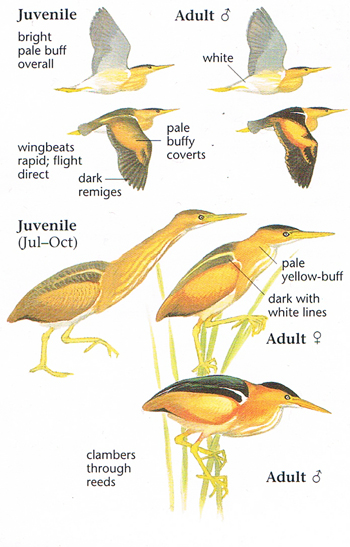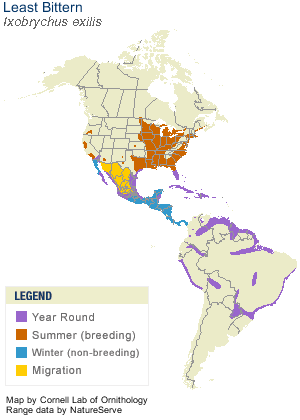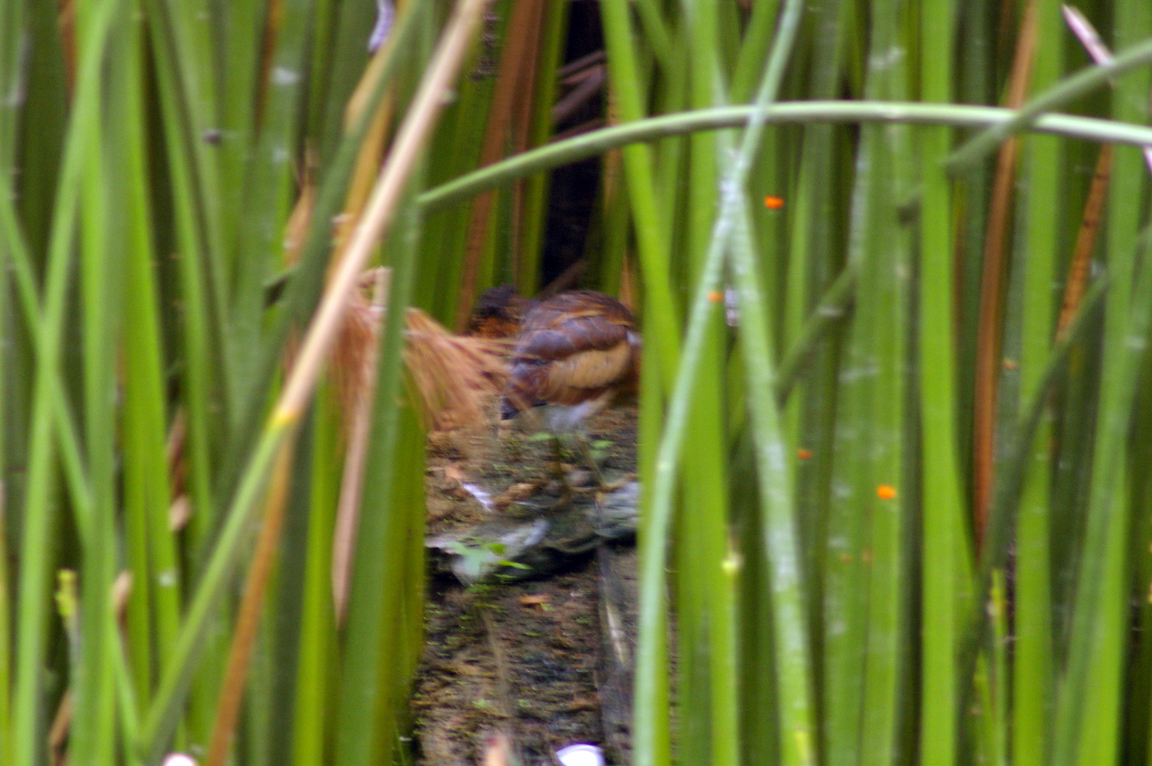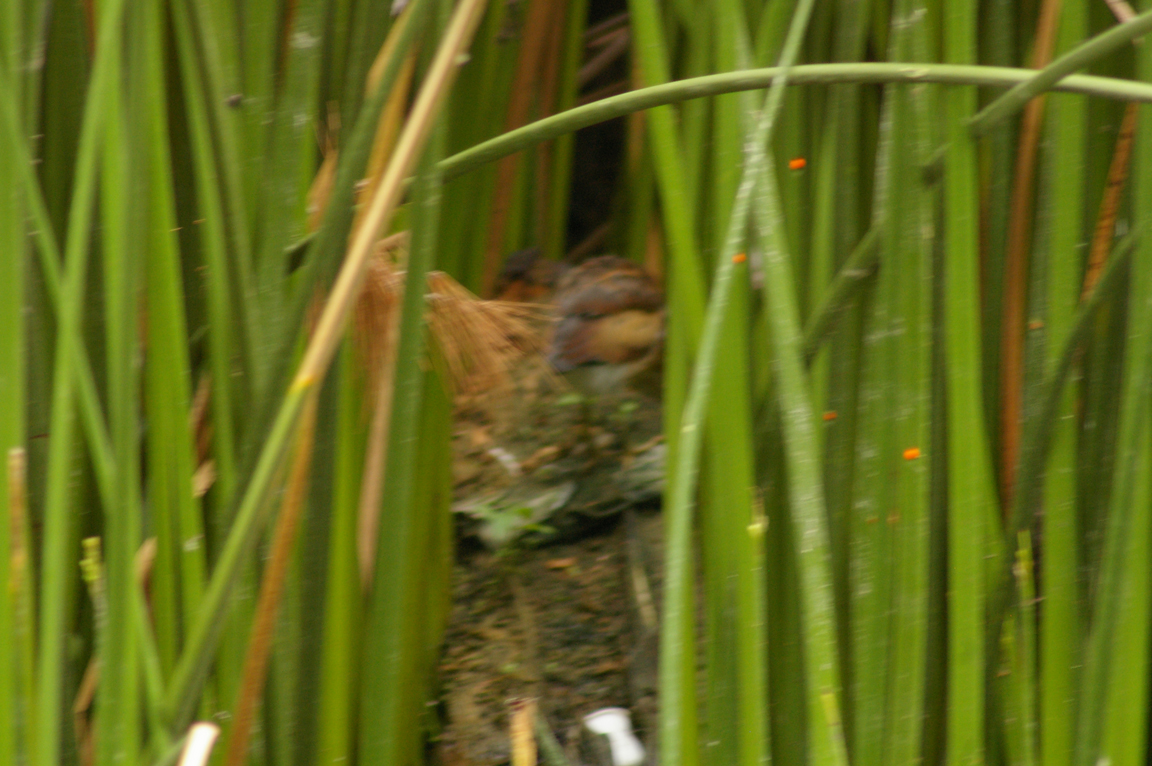|
|
|
 |
Least Bittern
|
| Ixobrychus exilis | |
A tiny heron, furtive and surpassingly well camouflaged, the Least Bittern is one of the most difficult North American marsh birds to spot. Despite its inconspicuousness, however, the species can be rather common within appropriate habitat in its breeding range.
Interesting Information
-
Thanks to its habit of straddling reeds, the Least Bittern can feed in water that would be too deep for the wading strategy of other herons.
-
When alarmed, the Least Bittern freezes in place with its bill pointing up, turns its front and both eyes toward the source of alarm, and sometimes sways to resemble wind-blown marsh vegetation.
-
The Least Bittern and the American Bittern often occupy the same wetlands, but may have relatively little interaction because of differences in foraging habits, preferred prey, and timing of breeding cycles. The Least Bittern arrives on its breeding grounds about a month after the American Bittern, and leaves one or two months earlier.
-
John James Audubon noted that a young captive Least Bittern was able to walk with ease between two books standing 1.5 inches (4 cm) apart. When dead, the bird's body measured 2.25 inches (5.7 cm) across, indicating that it could compress its breadth to an extraordinary degree.
Description
Adult Description
- Tiny heron.
- Long neck.
- Long bill.
- Crown and back black or dark brownish.
- Neck and sides warm orange-brown.
- Front of neck and chest striped orange and white
- Length Range: 28-36 cm (11-14 in)
- Weight: 85 g (3 oz)
- Size: Medium (9 - 16 in)
- Color Primary: Black, Buff
- Underparts: White
- Upperparts: Black
- Back Pattern: Solid
- Belly Pattern: Solid
- Breast Pattern: Striped or streaked
Sex Differences
Sexes similar.
Immature
Similar to adult female, with paler and browner crown.

Photo taken from: The Sibley Field Guide by David Allen Sibley

© 2003 Cornell Lab of Ornithology
|
Habitat |
|
Freshwater or brackish marshes with tall emergent vegetation. |
|
Behavior |
|
Stalks along reeds, sometimes next to rather deep water, or climbs on reed stalks, and strikes downward into water with bill. |
|
Food |
|
Small fish and insects. |
Taxonomy
| Kingdom: | Animalia |
| Phylum: | Chordata |
| Subphylum: | Vertebrata |
| Class: | Aves |
| Order: | Pelecaniformes |
| Family: | Ardeidae |
| Subfamily: | Botaurinae |
| Genus: | Ixobrychus |
| Species: | Ixobrychus exilis |
| Subspecies: | Ixobrychus exilis bogotensis |
| Ixobrychus exilis erythromelas | |
| Ixobrychus exilis exilis | |
| Ixobrychus exilis limoncochae | |
| Ixobrychus exilis peruvianus | |
| Ixobrychus exilis pullus |
Similar Species |
|
|
Bird Sound |
|
Does not sing. Calls buzzy; also sharp chips. Wings of adult male make a high, buzzy trill. |
|
Eggs look like this |
|
Photo taken from: ARCTOS Collaborative Collection Management Solution |







